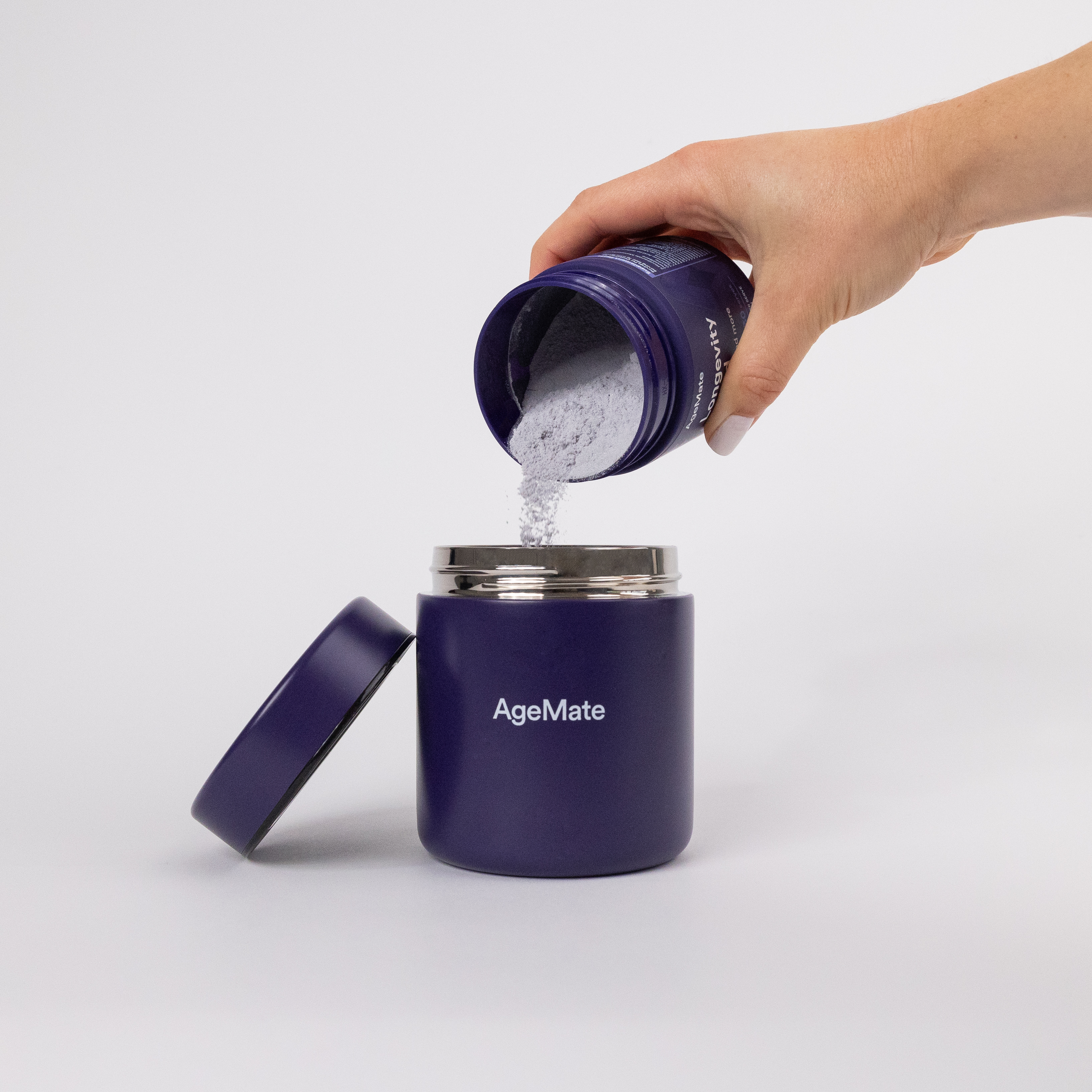Key Takeaways:
📌 Heart rate variability (HRV) is a valuable indicator of autonomic nervous system function and overall health, with higher HRV generally signalling better resilience and recovery.
📌 Factors such as stress, sleep quality, exercise, hydration, and nutrition all influence HRV, making it an essential metric for optimising performance and longevity.
📌 Tracking HRV over time allows you to personalise lifestyle changes and improve recovery, cardiovascular health, and stress resilience.
Did you know that a healthy heart doesn’t beat like a metronome? Instead of ticking away at a perfectly even pace, your heart rate fluctuates with every breath you take. This variation in time between heartbeats, known as heart rate variability (HRV), is a crucial indicator of your autonomic nervous system’s balance between stress and recovery.
What is Heart Rate Variability (HRV)?
HRV measures the tiny differences in the timing of each heartbeat, controlled by the interplay between the sympathetic (fight-or-flight) and parasympathetic (rest-and-digest) nervous systems. A higher HRV is often associated with better adaptability and resilience, whereas a lower HRV may indicate stress, fatigue, or poor recovery.
The nervous system plays a crucial role in HRV regulation. The sympathetic nervous system (SNS) increases heart rate and prepares the body for action, while the parasympathetic nervous system (PNS) slows the heart rate and promotes recovery. A high HRV suggests that your body can effectively switch between these states, while a low HRV may indicate an overactive SNS or impaired PNS function.
How to Calculate and Read HRV Data
HRV is measured by calculating the time intervals between successive heartbeats, known as RR intervals (or NN intervals in some cases). These intervals are measured in milliseconds and can be analysed in different ways (R):
- Time-domain analysis – The simplest method, measuring the standard deviation of RR intervals (SDNN) or root mean square of successive differences (RMSSD). Higher SDNN and RMSSD values suggest better autonomic balance.
- Frequency-domain analysis – Uses spectral analysis to break HRV into different frequency bands, representing sympathetic and parasympathetic nervous system activity.
- Non-linear methods – Advanced statistical models that assess HRV complexity and fractal properties, often used in research settings.

How to Measure Heart Rate Variability (HRV) at Home
Measuring HRV at home has become easier with modern technology, allowing you to track and optimise your health without needing a lab setting. Here’s how you can do it:
1. Use a Wearable Device
Many fitness trackers and smartwatches now include HRV monitoring. These devices automatically measure HRV while you sleep or during specific sessions.
Best Wearable Devices for HRV Tracking:
- WHOOP Band – Provides in-depth recovery insights based on HRV, sleep, and strain.
- Oura Ring – Measures HRV overnight and offers personalised recovery trends.
- Garmin Smartwatches – Includes HRV stress tracking and variability trends.
- Apple Watch – Measures HRV via the built-in ECG app.
💡 Tip: Wearables usually measure HRV at rest for more accurate readings. Consistency is key—track it at the same time daily for better insights.
2. Use a Heart Rate Monitor with an App
For more precise HRV readings, use a chest strap heart rate monitor (like Polar H10 or Garmin HRM-Pro) paired with a mobile app.
Top HRV Apps:
- HRV4Training – Uses your phone's camera or a chest strap for HRV tracking.
- Elite HRV – Compatible with various heart rate monitors, offers deep analytics.
- Kubios HRV – A research-grade app for more advanced users.
💡 Tip: If using a chest strap, sit in a relaxed position for 5 minutes before measurement.
3. Use Your Smartphone Camera
You can measure HRV without wearables using apps that utilise your smartphone’s camera and flash.
How It Works:
- Open an HRV tracking app like Welltory, HRV4Training, or Elite HRV.
- Place your finger over the camera lens (lightly, not pressing hard).
- Stay still while the app records pulse wave variability from your fingertip.
- Get a reading of your HRV score and related insights.
💡 Tip: This method works well for casual tracking but may be less accurate than wearables.
4. Manual HRV Calculation (Advanced)
If you want to calculate HRV manually:
- Use an ECG device or heart rate monitor to record RR intervals (time between heartbeats).
- Calculate SDNN (Standard Deviation of RR Intervals) or RMSSD (Root Mean Square of Successive Differences).
- Compare trends over time rather than focusing on a single number.
💡 Tip: This method requires technical knowledge but provides the most accurate results.

Best Time to Measure HRV:
- First thing in the morning – before eating, drinking, or moving too much.
- Before bedtime – can reflect recovery status from the day.
- Post-workout or stress event – to assess how your body responds to exertion.
What is a Good HRV? Understanding Typical Ranges
HRV values vary based on factors such as age, fitness level, and overall health. While HRV fluctuates throughout the day and is best analysed over time, here are general reference ranges (R):
- Elite athletes: HRV values may exceed 100 ms, indicating strong cardiovascular efficiency and autonomic balance.
- Healthy adults: HRV typically ranges between 40-100 ms, with variability based on fitness level and lifestyle factors.
-
Lower HRV (below 40 ms): May indicate chronic stress, poor fitness, or underlying health issues.
Rather than focusing on a single reading, tracking trends over time gives a more accurate picture of your health and recovery status.
Why a Higher HRV is Considered Better
A high HRV indicates greater autonomic flexibility, meaning your body efficiently transitions between stress and relaxation states. This adaptability is linked to (R):
- Better cardiovascular health – Higher HRV is associated with lower risks of heart disease and improved heart function.
- Improved recovery and resilience – High HRV reflects your body’s ability to recover quickly from physical exertion or stress.
- Enhanced cognitive function – Studies show a connection between HRV and brain health, including emotional regulation and decision-making skills.
Conversely, a consistently low HRV can indicate chronic stress, poor sleep, or underlying health issues, making it essential to identify and address contributing factors.
What Affects HRV?
Many lifestyle and environmental factors influence HRV, including:
- Stress levels – Chronic stress activates the sympathetic nervous system, reducing HRV.
- Sleep quality – Poor sleep can lead to lower HRV, impairing recovery and cognitive function.
- Physical activity – While intense workouts may temporarily lower HRV, regular exercise increases baseline HRV over time.
- Nutrition and hydration – Nutrient-rich diets and proper hydration support optimal autonomic function, improving HRV.
- Breathing patterns – Slow, deep breathing techniques can increase HRV and improve vagal tone.
Understanding how these factors interact can help you take proactive steps to optimise your HRV.
How Exercise Influences HRV
Exercise plays a dual role in HRV regulation. While high-intensity workouts may cause a temporary drop in HRV due to increased sympathetic activity, long-term physical fitness is associated with higher resting HRV (R).
- Endurance training (e.g., running, cycling) enhances cardiovascular efficiency and parasympathetic tone.
- Overtraining without adequate recovery can suppress HRV, signalling excessive physiological stress.

HRV and Recovery: Why It Matters
Your HRV is one of the best indicators of recovery status. Monitoring HRV trends allows you to determine whether your body is ready for intense exercise or needs additional rest.
When HRV is consistently low, it may indicate overtraining, insufficient sleep, or excessive stress. Recovery strategies such as active rest days, cold exposure, meditation, and proper nutrition can help restore HRV and improve overall performance (R).
Biomarkers That Directly Influence HRV
Several biomarkers correlate with HRV and provide further insights into your physiological state (R):
- Cortisol levels – High cortisol (stress hormone) is often linked to lower HRV.
- Inflammation markers (CRP, IL-6) – Chronic inflammation can suppress HRV and impair autonomic balance.
- Glucose regulation – Blood sugar fluctuations impact nervous system function and HRV.
- Electrolyte balance – Proper levels of magnesium, potassium, and sodium support heart rhythm and HRV stability.
Understanding these biomarkers alongside HRV can provide a comprehensive view of your health and recovery needs.
Using HRV Data to Optimise Your Health
HRV tracking provides a powerful tool for personalised health optimisation. By regularly monitoring HRV and adjusting lifestyle habits accordingly, you can enhance your overall well-being and longevity (R).
Key strategies to improve HRV include:
✔️ Prioritising quality sleep
✔️ Managing stress effectively
✔️ Engaging in regular physical activity
✔️ Supporting gut health and nutrition
✔️ Hydrating properly
By applying these strategies, you can leverage HRV as a real-time measure of your health status, guiding better decisions for long-term vitality.
Take Control of Your Heart Rate Variability
HRV is a fascinating and accessible biomarker that offers profound insights into your overall health, stress resilience, and recovery. Understanding what influences HRV and how to interpret your data can help you make informed choices that support longevity and well-being.
Looking to dive deeper into optimising your heart health? Check out our blog on Unlocking the Fountain of Youth: How Heart Rate Variability Influences Longevity for more science-backed strategies on longevity and cardiovascular wellness.





